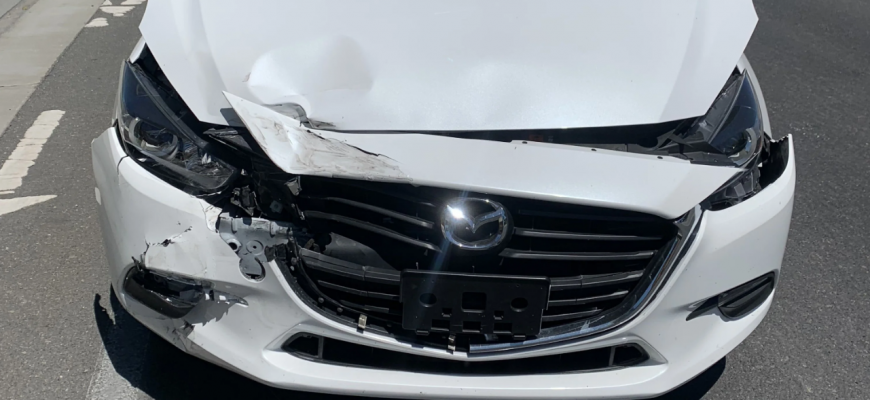
Common Types of Collision Damage and How They’re Repaired
Common Types of Collision Damage and How They’re Repaired
Understanding the nuances of collision damage and the intricacies of its repair is crucial for any vehicle owner. In Australia, where road conditions and regulations may differ from other parts of the world, being informed about these aspects is even more vital. This article delves into the common types of collision damage encountered by Australian drivers and outlines the repair processes, aiming to equip you with knowledge that ensures your vehicle’s longevity and safety.
Types of Collision Damage
Front-End Collision Damage
Front-end collisions often result in visible damage to the bumper, bonnet, and lighting systems. Beyond aesthetics, such impacts can affect safety features, including airbag deployment sensors. Repairing front-end damage typically involves panel beating, replacement of damaged parts, and precise paintwork to match the vehicle’s original color.
Rear-End Collision Damage
Rear-end impacts can deform the bumper, trunk, and exhaust system. Hidden damage might also occur, affecting the alignment and structural integrity. Repairs may range from simple bumper replacements to more complex adjustments to the vehicle’s frame or undercarriage.
Side-Impact Collision Damage
Side collisions can crumple doors, shatter windows, and bend the vehicle’s frame. Repairing this type of damage often requires extensive work, including door panel replacement and, in severe cases, cutting out and replacing sections of the vehicle’s frame.
Roll-Over Damage
Roll-over accidents typically cause significant damage to the roof, potentially compromising the vehicle’s structural integrity. Repairing roll-over damage is complex, often involving the replacement of the entire roof, realignment of the frame, and sometimes, the painstaking task of ensuring the vehicle is structurally sound and safe to drive.
How Collision Damages Are Repaired
Assessment and Estimation
The repair process begins with a thorough assessment to determine the extent of the damage. In Australia, certified technicians use advanced diagnostic tools to evaluate both visible and underlying damage, ensuring an accurate repair estimate.
Body Repair or Replacement
Deciding whether to repair or replace a damaged part depends on the severity of the damage and the cost-effectiveness of each option. Technicians employ various techniques, from traditional panel beating to the use of modern materials and adhesives, to restore the vehicle’s appearance and integrity.
Painting and Finishing
Matching the paint colour and finish of a vehicle is an art. Modern paint shops use computerized systems to create a perfect match. The painting process involves several stages, including priming, colour application, and sealing, to ensure a durable and aesthetically pleasing finish.
Structural Repairs
Vehicles suffering from frame or structural damage require specialized equipment for alignment and straightening. This process is critical to restoring the vehicle’s safety and drivability, adhering to strict Australian standards.
Safety Inspections and Testing
After repairs, vehicles undergo rigorous safety inspections and testing to ensure they meet Australia’s stringent road safety standards. This includes everything from wheel alignment checks to airbag system diagnostics.
Considerations for Australian Vehicle Owners
Insurance Claims
Navigating insurance claims is a crucial step in the repair process. In Australia, it’s important to understand your policy’s coverage, including the choice of repairer and how claims affect future premiums.
Costs and Warranty
Understanding the costs involved and the warranty offered on repairs is essential. Reputable repairers will provide transparent quotes and warranties that cover both parts and labour.
Latest Trends in Collision Repair Technology
Advanced Materials and Techniques
The use of advanced materials like carbon fibre and aluminium requires specialized repair techniques. Australian repairers are adopting these new materials and methods, ensuring repairs meet the highest standards.
Digital and 3D Technologies
Digital scanning and 3D printing are revolutionizing the way custom parts are fabricated and fitted. These technologies allow for precise repairs and can significantly reduce the time your vehicle spends in the shop.
For South Australian drivers, understanding the types of collision damage and their repair processes is more than just about keeping your vehicle looking its best; it’s about ensuring its safety and reliability. By choosing reputable repair services and staying informed about the repair process, you can navigate the aftermath of a collision with confidence. Remember, the safety of your vehicle impacts not just you but everyone on the road.
Other Sources
To ensure the accuracy and reliability of the information provided, this article references data and guidelines from, the Australian Automotive Aftermarket Association (AAAA), National Collision Repairer magazine, the Insurance Council of Australia, and Choice Magazine. These sources are instrumental in providing up-to-date, Australia-specific information on vehicle repairs and safety standards.

